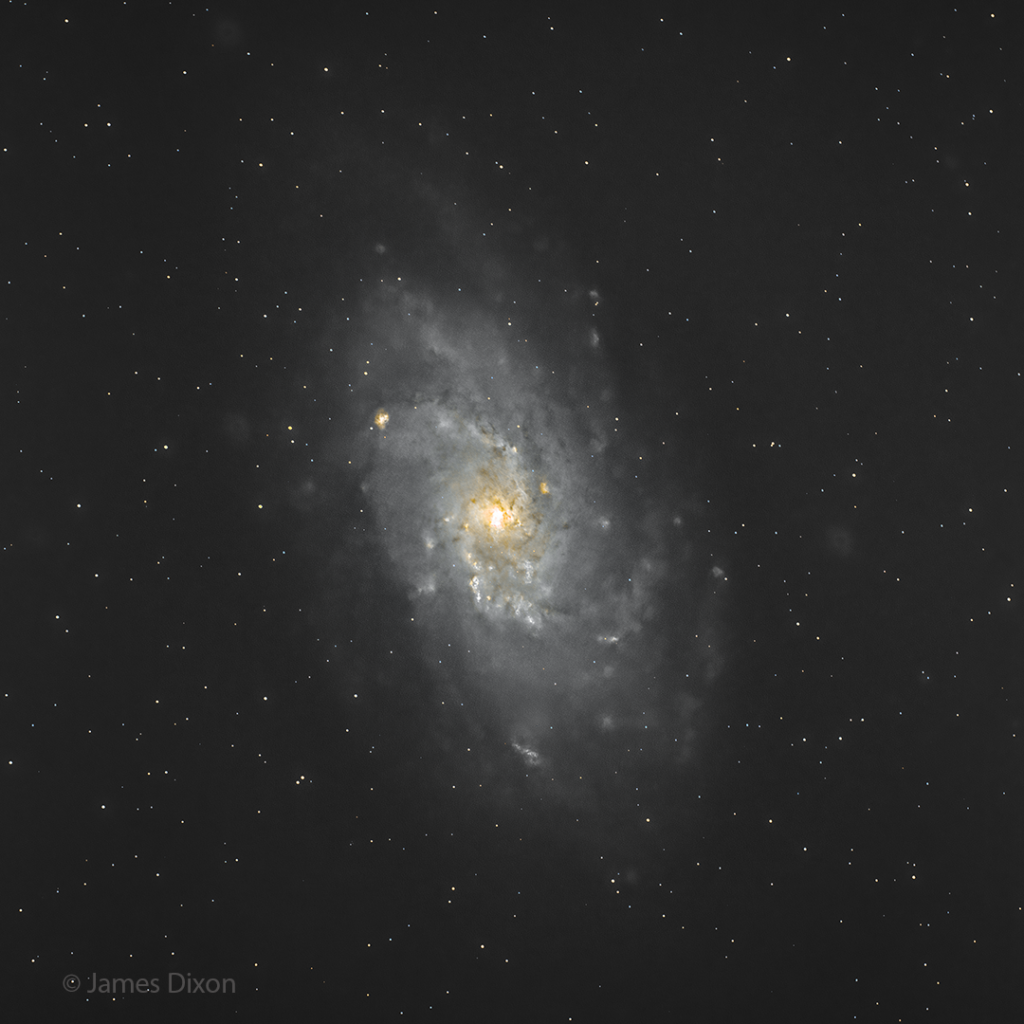It was a good night at the River Ridge Observatory. Warmer temperatures, no wind, good seeing. My primary target was the Triangulum Galaxy (aka M33) which I’ve never gotten a good image of. This one could be better but is still the best I’ve done with the object. It is three hours of two minute subs using my 11″ SCT at f/1.9 with my ZWO ASI 294MC Pro and an IDAS LPS D3 light pollution filter. After I finished this object, I spent an hour capturing “Caroline’s Rose” (aka NGC 7789).


From Wikipedia:
The Triangulum Galaxy is a spiral galaxy 2.73 million light-years (ly) from Earth in the constellation Triangulum. It is catalogued as Messier 33 or NGC (New General Catalogue) 598. With the D25 isophotal diameter of 18.74 kiloparsecs (61,100 light-years), the Triangulum Galaxy is the third-largest member of the Local Group of galaxies, behind the Andromeda Galaxy and the Milky Way. It is one of the most distant permanent objects that can be viewed with the naked eye.
NGC 7789 (also known as Caroline’s Rose or the White Rose Cluster) is an open cluster in Cassiopeia that was discovered by Caroline Herschel in 1783. Her brother William Herschel included it in his catalog as H VI.30. This cluster is also known as the “White Rose” Cluster or “Caroline’s Rose” Cluster because when seen visually, the loops of stars and dark lanes look like the swirling pattern of rose petals as seen from above.
